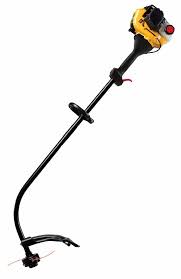Lawn Weed Killer, A lush, green lawn can be the pride of any homeowner, but it often comes under attack from stubborn weeds. Weeds compete for nutrients, sunlight, and water, disrupting the appearance and health of your yard. If you’re seeking a way to restore your lawn to its prime condition, choosing the right lawn weed killer is essential. In this article, we’ll explore the different types of weed killers, how they work, and tips for effective use.
Types of Lawn Weed Killers
There are many options on the market, each designed to target specific types of weeds. Here’s a breakdown of the main types:
- Selective Weed Killers
- These target specific weeds without harming your grass. They’re ideal for removing broadleaf weeds like dandelions or clover.
- Best used for spot treatments in areas with desirable plants.
- Non-selective Weed Killers
- These products eliminate all vegetation they come in contact with, including grass.
- They are most useful for clearing overgrown areas, walkways, or driveways but should be used cautiously on lawns.
- Pre-emergent Weed Killers
- Pre-emergent weed killers prevent weed seeds from sprouting and spreading.
- Apply them early in the growing season to stop common lawn invaders like crabgrass before they appear.
- Post-emergent Weed Killers
- These target weeds that have already grown. They work by penetrating the leaves, killing the plant from the inside out.
- Effective for treating visible weeds such as chickweed, bindweed, and plantain.
How to Use Lawn Weed Killer Effectively
1. Identify the Problem
Before applying any product, it’s essential to identify which weeds are causing trouble. Knowing the difference between annual, biennial, or perennial weeds can help you choose the right lawn weed killer.
2. Timing Matters
- Pre-emergent herbicides are most effective when applied in early spring, just before weeds germinate.
- Post-emergent products work best when weeds are actively growing, usually in late spring or early summer.
- Avoid applying weed killers during periods of drought or extreme heat to prevent damaging your lawn.
3. Follow Instructions Carefully
Always read the product label for application rates and safety recommendations. Overusing weed killers can damage your lawn, while underusing them may lead to ineffective results.
4. Weather Considerations
- Apply the lawn weed killer on a calm day to prevent drift from wind.
- Ensure there is no rain forecast for at least 24 hours after application to allow the product to work effectively.
Natural Alternatives to Chemical Lawn Weed Killers
If you’re concerned about the environmental impact of synthetic weed killers, natural alternatives might be a good option:
- Vinegar-based herbicides: High-concentration vinegar can be used to kill weeds naturally.
- Corn gluten meal: This acts as a natural pre-emergent to prevent weed seeds from sprouting.
- Boiling water: Pouring boiling water directly on weeds is an effective, chemical-free way to eliminate small patches.
Safety Tips for Using Lawn Weed Killers
- Protect pets and children: Keep them away from treated areas until the lawn weed killer has dried or absorbed.
- Wear protective gear: Gloves, goggles, and long sleeves help prevent skin or eye irritation.
- Store products properly: Keep lawn weed killers in a cool, dry place, out of reach of children and pets.
Conclusion
Maintaining a weed-free lawn doesn’t have to be a daunting task when you use the right lawn weed killer. Whether you prefer chemical-based or natural alternatives, choosing the right product and applying it at the right time are crucial steps toward achieving a healthy, green lawn. By following the tips outlined above, you can reclaim your outdoor space from invasive weeds and enjoy a thriving, beautiful landscape throughout the season.
You Might Also Like These:



